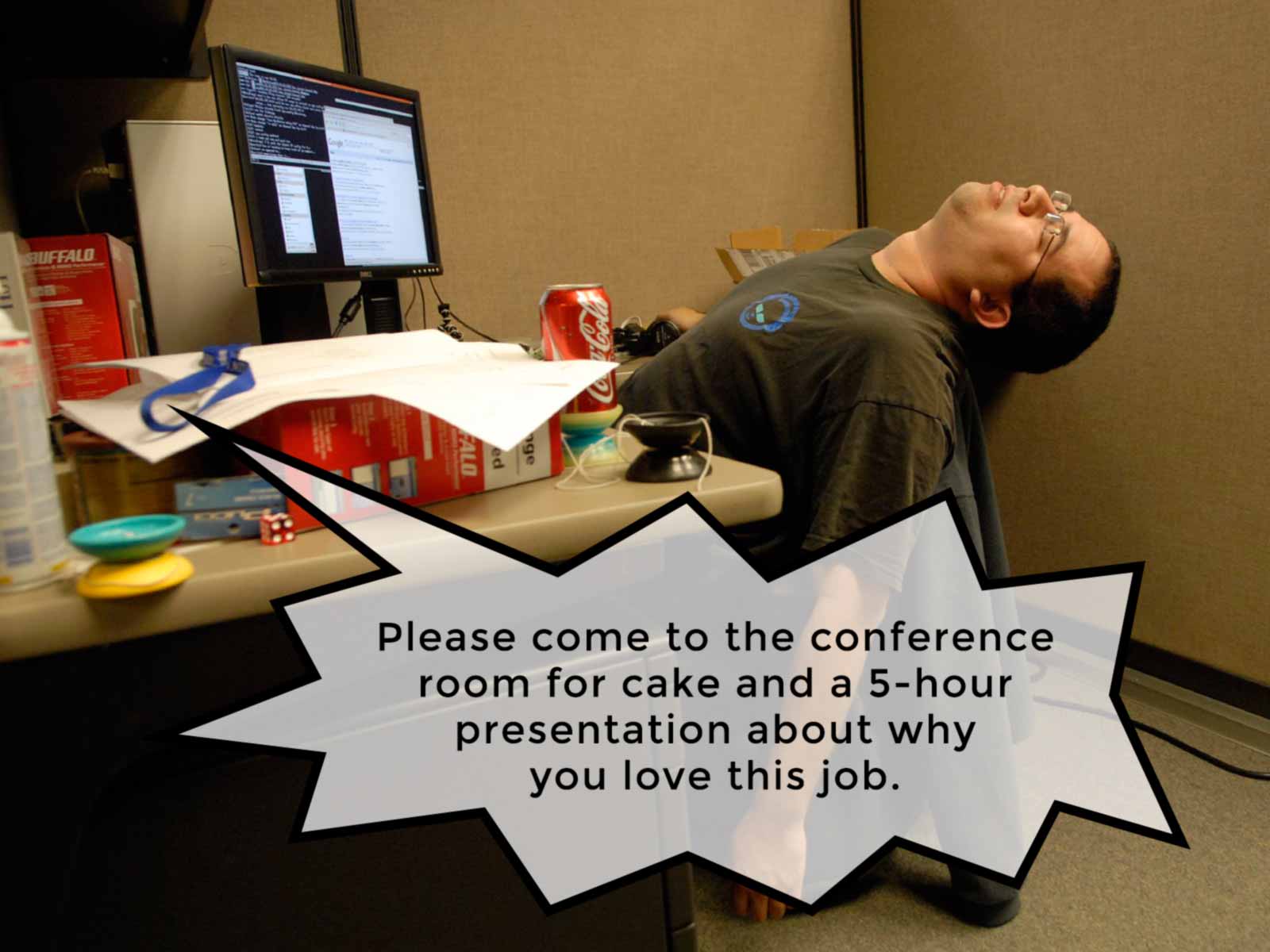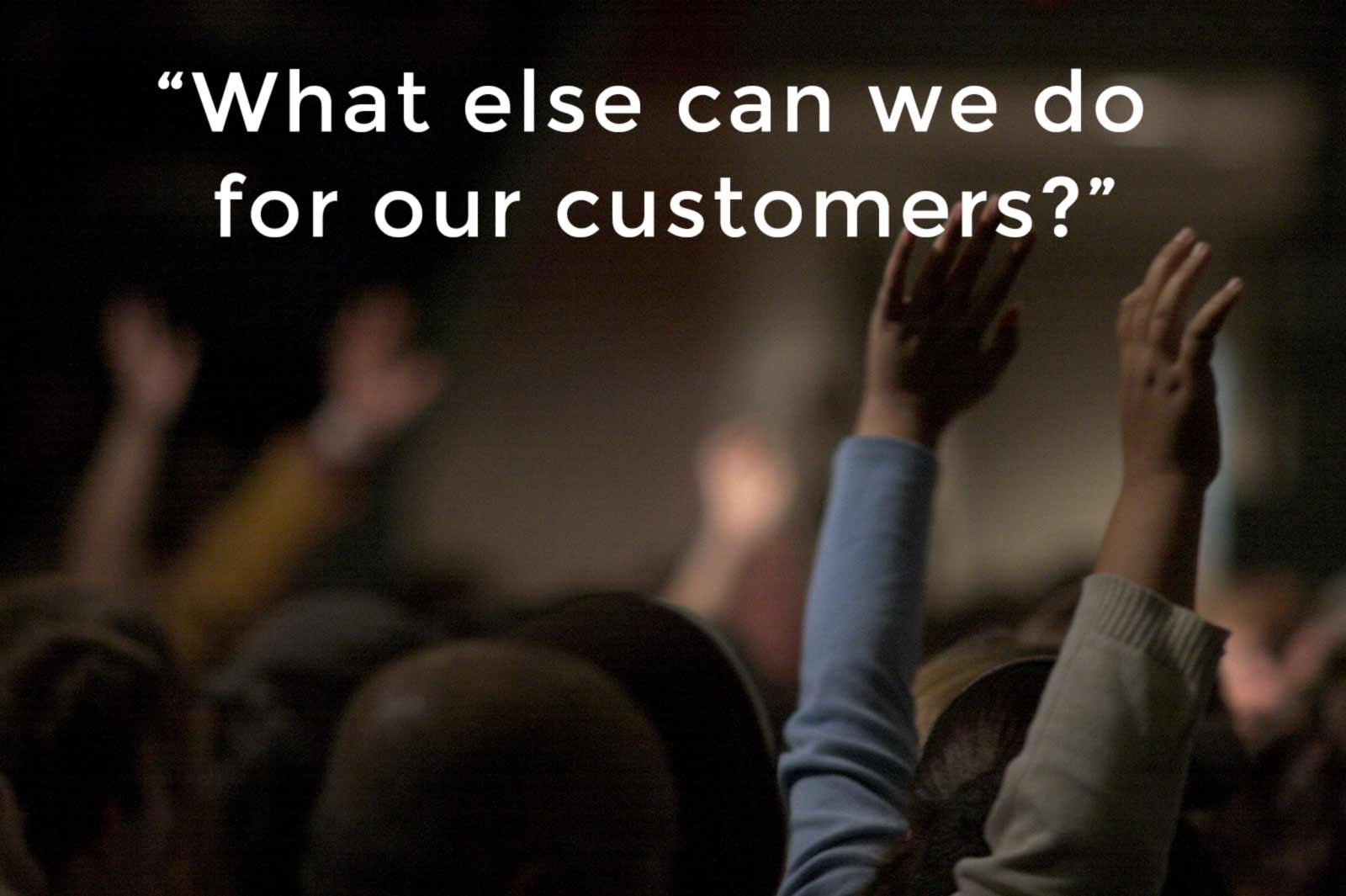Employees. You’re going to have to face them sooner or later if you’re trying to build a customer-centric culture. How do you get them in line? How do you get them to deliver on your promise? How do you get them to care about company goals?
Before you bang your head on your mahogany desk, maybe you should ask yourself another question: Why should your employees care?
“You’d better start caring now, or else.”
It’s difficult to achieve an emotional state (i.e., “care”) with a logic-based approach (i.e., “get them to do it”). If it were easier, middle school probably would’ve been less emotional.

To make it worse, “How do we get employees to care?” creates a division between you and your employees from the start. You’re implying a “we and them” approach. But employees are part of the collective “we” that makes up your company. They have needs and opinions and impact. Why would you talk to them like opponents?
Three Elements of Organizational Alignment
Let’s focus on three things at work here: culture, engagement, and goals.
The first two exist whether you focus on them or not.

Engagement (or lack thereof) is present in every company. It can be seen in your turnover statistics. Or your time sheets. Or the number of applicants who come via employee referral. It lives in your productivity stats, your error rates, your absenteeism, and your customer satisfaction scores.
Culture is the same way. It lives in the way people communicate, tell stories, behave, and run meetings. How people act over the course of your day-to-day operations is reflective of your unique culture.
Goals, on the other hand, only exist if you create them. They require conscious acts of refining vision, strategy, and success. If your company goals aren’t clearly defined, you’re not going anywhere.
Goals, culture, and engagement don’t have a straightforward, linear relationship—but they are correlated. In our experience, high engagement and strong cultures are often found in companies with clearly articulated visions, strategies, and goals. (That might be due to the fact that the companies able to articulate purpose and success are also more likely to be managing employee engagement and culture.) And with all these things working in harmony, the company is more likely to reach its goals.
To be fair, such companies are few and far between. The bulk of companies are just trying to figure out where to start: engagement or culture?
Companies that choose to work with us in employee engagement often find it’s an insightful starting point. We help them identify the emotional and functional factors at work for their employees. Then we use that data to build a plan to create higher levels of motivation and commitment.
We’re happy to help any company with employee engagement, regardless of its goals. It’s important work.
But when a client has a stated goal to deliver great customer experiences, and therefore needs to create a customer-centric culture — then, well, they’re in our sweet spot. We see that as really important work.

The Power of Customer-Centric Goals
Customer centricity has a funny way of creating alignment and boosting employee engagement. In an independent research study, we discovered two items of note:
-
Emotional factors drive employee engagement more than functional factors. Most of all, employees need a sense of purpose and to feel that they can trust leadership to drive the company forward.
-
Customer-centric companies have more engaged employees than company-centric companies. It seems customer focus can help align priorities and actions, and drive engagement.
That’s still an interesting set of findings. Put another way, it means your employees will be more engaged if your company tries to do what’s right for the customer. If their purpose is the customer, and they feel trusted in working for the customer, then hello engagement.
Asking Better Questions
So, back to the start. If you’re asking, “How can we get employees to care?” try rephrasing it for better effect. Try “How can we better communicate goals?” or “How can we help our team feel a sense of purpose?” Remember, boosting employee engagement starts with clearly defining the collective goal. You’re all in it together. So define the purpose and then work to make sure everyone is empowered to achieve that purpose.
If you find your questions start getting more customer-centric, and you need a partner to help you on the journey, don’t be afraid to contact us! We’d be happy to scratch that itch.

We’ve helped clients achieve great things through customer-centric culture. If you’re interested in customer centricity at your company, or want to learn about how we can help you, then contact us. If you want to learn more about how engagement and culture work in practice, then you can also download our case study:
- “Elliot fake crying…” by Dan Zen, CC BY 2.0
- “Gary had a long night” by star5112, CC BY-SA 2.0
- “Huey” by wsilver, CC BY 2.0
- “Questions” by Derek Bridges, CC BY 2.0



